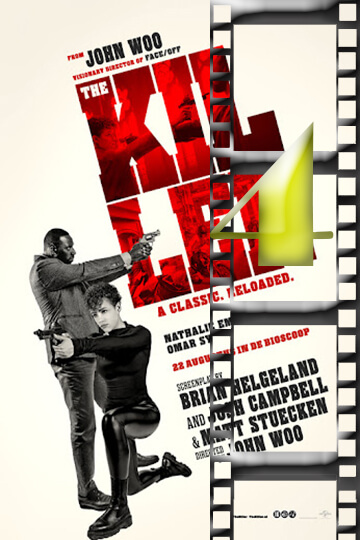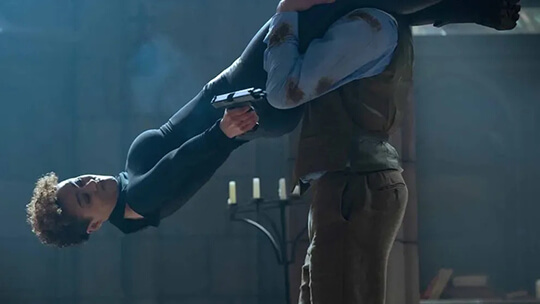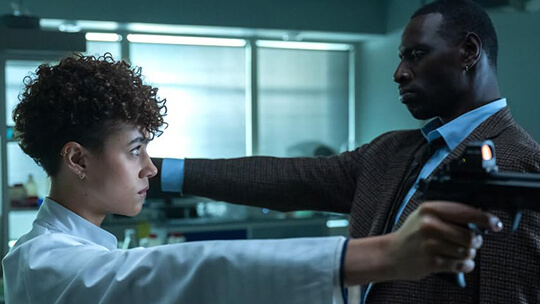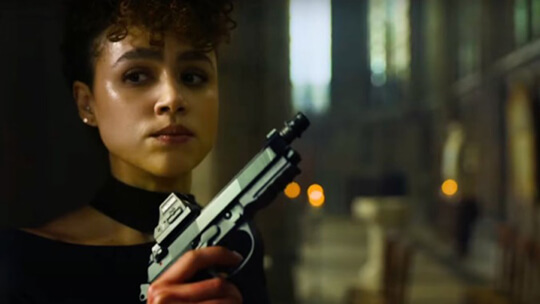

WHAT’S IT ABOUT
When a feared contract killer, from Paris, refuses to murder a young blind woman on the orders of her handler, she finds herself hunted by old colleagues and a determined detective.



MOVIESinMO REVIEW
John Woo’s 1989 “The Killer” blazed new trails for Hong Kong cinema, propelling Chow Yun-Fat to international stardom and showcasing Woo’s distinctive blend of balletic violence. This 2024 remake, however, struggles to recapture that magic. The film’s most puzzling choice involves a song central to its plot. When Jenn (Diana Silvers), an American singer caught up with Parisian drug dealers, allegedly composes an original song, the narrative, for some unfathomable reason, offers up The Grass Roots’ “Let’s Live for Today” – a million-selling single from the 1960s – as an unheard composition. This baffling choice typifies the larger identity crisis at play in the film itself. Nathalie Emmanuel portrays Zee, the titular assassin grappling with professional doubt. While Emmanuel disappears convincingly into her character’s various disguises, she falters during moments of introspection. Sam Worthington emerges as a surprising highlight, playing her handler with calculating menace – a welcome departure from his typically wooden leading-man roles. Their relationship carries uncomfortable undertones, with Worthington’s character positioned as both paternal figure and manipulator. The narrative closely follows the original’s blueprint, transplanting the action to Paris. Zee finds solace in a tailor’s shop (run by Tcheky Karyo) and a deconsecrated church, where she lights candles for her victims amid Woo’s trademark fluttering doves. The plot thickens when she accidentally blinds a young woman (Diana Silvers) during a hit, then faces pressure to eliminate this potential witness. A parallel storyline introduces Sey (Omar Sy), a maverick detective investigating drug trafficking who transitions from pursuing Zee to partnering with her. Emmanuel and Sy have great chemistry, making their scenes lively with playful tension and respect for each other. If the film had focused more on their relationship instead of its complicated story, it could have been better. Sadly, Woo’s usual style seems less powerful. Even though his common themes – churches, doves, motorcycles, and fancy gunfights – are still there, they don’t feel as strong as before. The action sequences suffer from contemporary quick-cut editing and tight framing that obscure rather than enhance the choreography. The climactic church shootout delivers some thrills but pales compared to Woo’s earlier work. Technical elements further diminish the experience. Marco Beltrami’s score oscillates awkwardly between echoing the original film and generic background music. The cinematization of the movie looks flat and fake, like a TV show, with its bright lights and no depth. Because of these simple production values, Universal decided to put the film on Peacock rather than in theaters. The script, which Woo wrote with Brian Helgeland and Josh Campbell, uses common crime movie ideas that are touched up with dramatic notions, but even with its showing of famous locales in Paris, the setting does not feel fully used. The film has a playful, cartoon-like feel in its action scenes, giving up the deep emotions of the original for excitement. “The Killer” is good enough for casual action fans but doesn’t quite match the match impact of the earlier film. It has skillfully made action scenes and interesting character relationships, but it lacks the strong vision and skill that made Woo’s earlier film great. Viewers seeking the director’s trademark stylistic excess would be better served revisiting the 1989 original. Unlike Hitchcock’s successful 1956 remake of his own “The Man Who Knew Too Much,” which improved upon the 1934 version with enhanced production values and better-utilized star power, this self-remake suggests diminished creative ambition. It demonstrates how even acclaimed filmmakers can struggle to recapture past glories when constrained by contemporary studio limitations and shifting artistic sensibilities.
OUR RATING – AN UNEVENTFUL 4

